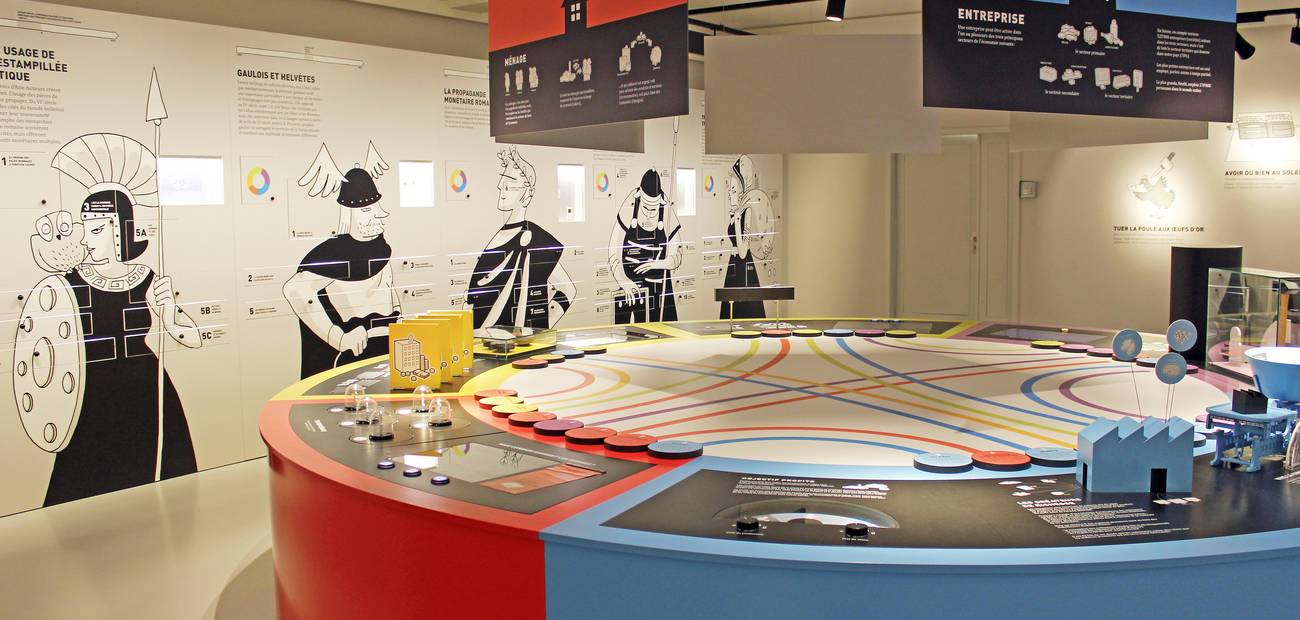Collections of Coins and Medals
Here's the Money ! (Colin Martin Room)
Money as we know it today appeared in around 600 B.C. in Asia Minor (which today is Turkey). It made trade between people easier and its use and production spread rapidly in the Mediterranean area and beyond. The permanent exhibition of the MCAH Collections of Coins and Medals invites the visitor to discover the history of money from its creation to today. At the heart of the narrative, the treasures and finds of coins in Vaud are placed in their contexts of discovery. There is a particular stress on the role of money in today's world, thanks to the central module, which provides a link between numismatics and the economy.
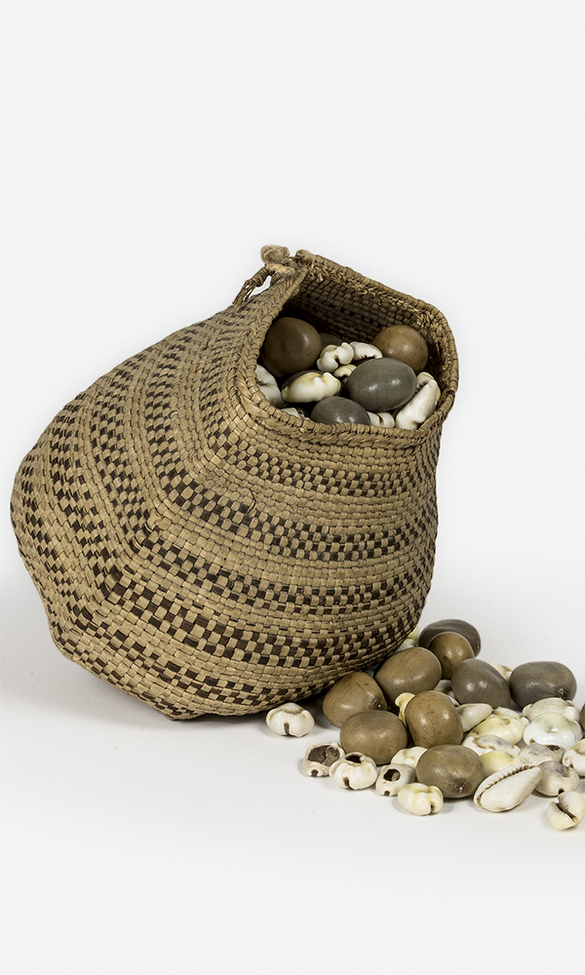
Basket of Cowries and Beans, Africa, 19th century.
Before Coins
Societies that did not know coins developed sophisticated economies by using certain objects as mediums of exchange and setting up detailed accounting systems. Metal, especially gold and silver, gradually prevailed in trade, because it is hard-wearing, it can be split up and it is easy to transport and store. A major step forward was the emergence of the concept of marking the fractions of the metal with the seal of the authority that minted them, thus guaranteeing their weight and value. Coins were produced that were units of account, means of payment, reserves of wealth and propaganda media at the same time.
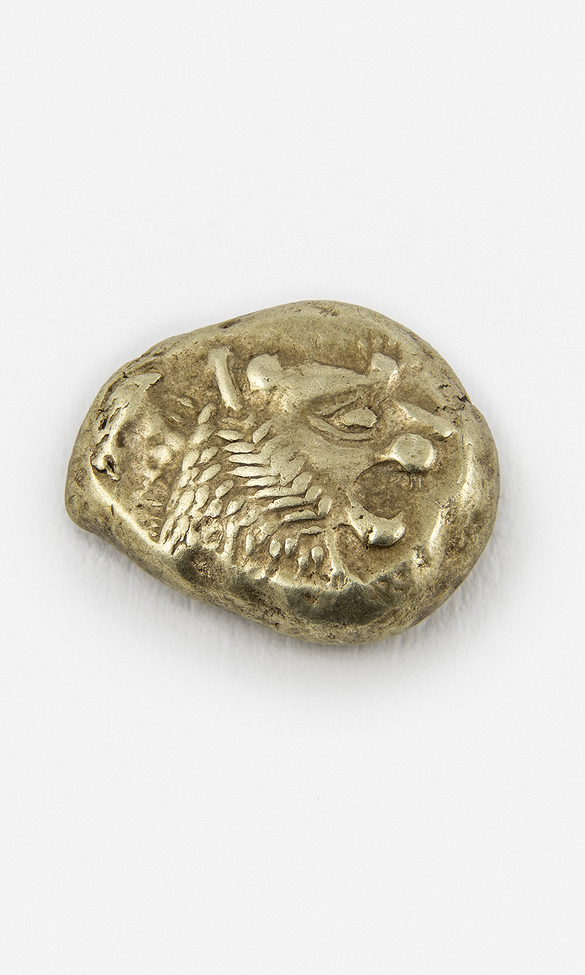
One of the First Coins Minted in Western Asia Minor: a Trite (1/3 of a Stater) from Sardis, circa 520 B.C.
Greece and the Celtic world
The Greeks who settled in Western Asia Minor were the first to mint coins in around 600 B.C. Very rapidly, the cities of Aegina, Corinth and Athens adopted this system and produced a large quantity of silver coins. Greek settlers from Sicily, Southern Italy and Marseille followed the movement. From 336 to 323 B.C., Alexander the Great swamped the distant territories that he conquered with coins. His successors, the Hellenistic monarchs, minted coins on a large scale, inspired from motifs developed by the great king. Celts, who were conscripted as mercenaries in Hellenistic armies, probably brought coins home with them, especially to Switzerland, where they then started to mint their own money.
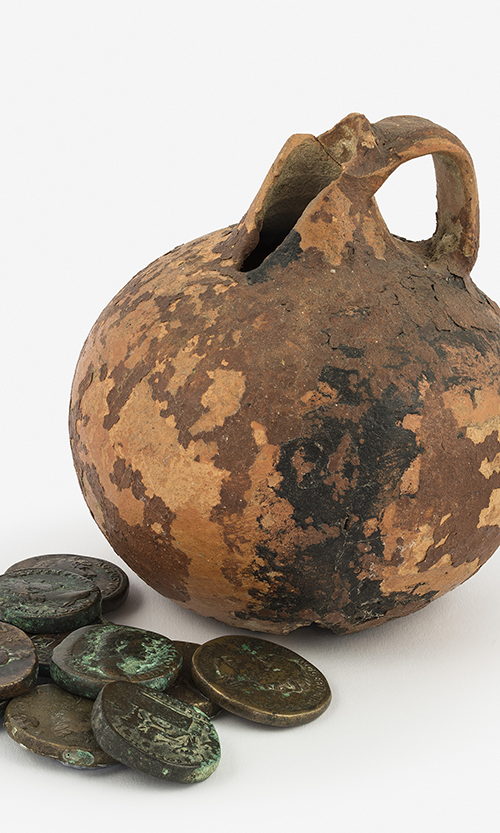
The Treasure of Avenches, Discovered in 1807, Consisting of approximately 70 Roman Bronze Coins in a Jug.
Rome
Rome was also influenced by the Greek world and started to mint coins in around 300 B.C. Their monetary system, which first mainly consisted of bronze coins, was supplemented first by silver coins and then by gold coins. There were several reforms during the nine centuries of Roman monetary history. The great generals and then the Emperors minted coins with very rich iconography in unprecedented proportions. Finds of coins in Vaud bear witness to this - they reflect not only the Roman occupation but also the "Barbarian" invasions in the 3rd century A.D. and the gradual collapse of the structures of the Western Roman Empire.

Lot of Ten Charlemagne Denarii found in the Necropolis of Bel-Air, Municipality of Lausanne.
Middle Ages
In the East, the Roman monetary system was not abandoned but was enriched by new types of coins and it lasted until 1453. In the West, on the other hand, the territorial breakup caused by the collapse of the Roman Empire led to the appearance of a large number of authorities, which first respected the Byzantine model and then moved away from it. From the late 10th century onwards, after the attempted monetary centralisation by the Carolingians, the secular and ecclesiastical lords on the banks of Lake Geneva, who were the bishops of Geneva and Lausanne, the barons and counts of Vaud and then the dukes of Savoy, minted denarii and silver obols. From 1252 onwards, the great Italian trading city-states created new gold and silver coins of great value to respond to the needs of large-scale trade.
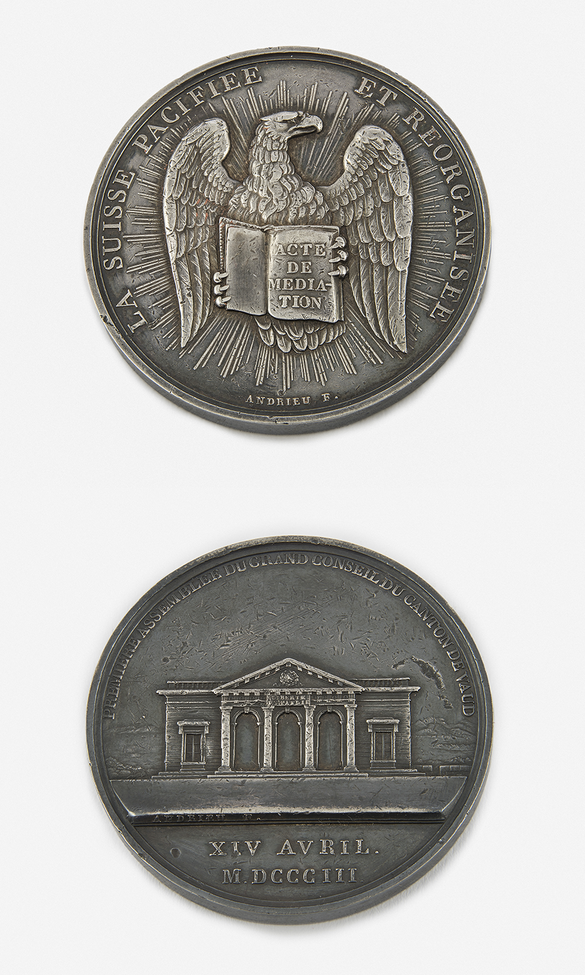
Medal Commemorating the First Assembly of the Grand Council of Vaud on 14th April 1803.
Modern and Contemporary
From 1536 to 1798, the Vaud region was occupied by the Bernese who imposed the Reformation and set up their monetary system consisting of Batzen and Rappen. In 1803, the people of Vaud liberated themselves from the Bernese rule and regained the right to mint coins. The Lausanne mint resumed its activity until 1848 when the Confederates centralised monetary production in Bern after the Sonderbund War. Swiss francs and centimes were created, which were almost identical to those that we use today. Only the alloy was modified in 1968 following an increase in the price of silver. The Confederation decided then to issue cupro-nickel fiduciary money. The value of coins is now decided by the State that issues them and is no longer directly related to metal that they are composed of.
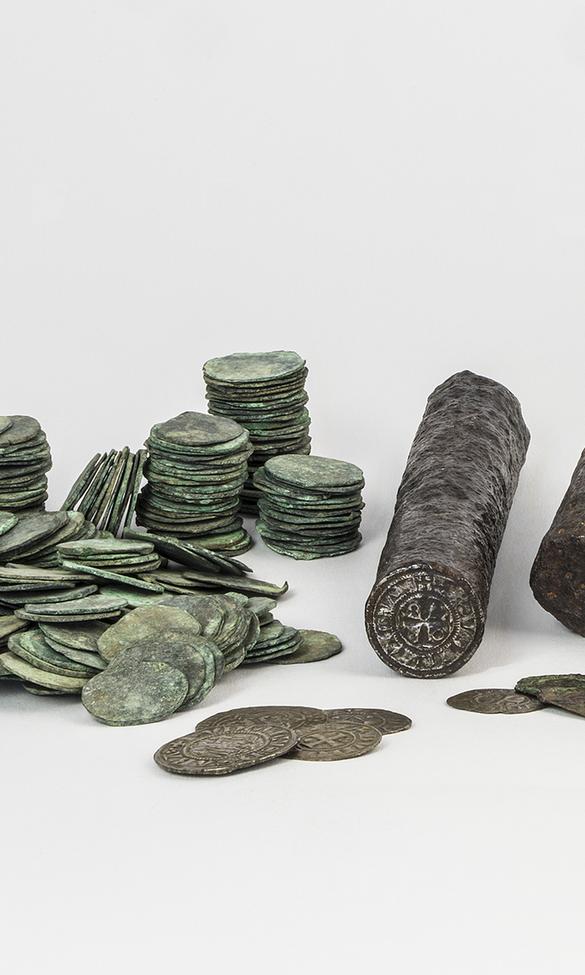
Coins and Planchets of a Counterfeiter, together with 14th century Official Currency, found in Rovray (Vaud) in the First Half of the 20th Century.
Metal for Money, Production and Economy
Metal is essential for minting coins and is found naturally in various forms that States, from Antiquity to today, have been eager to control. For centuries, several techniques were developed, first manual then mechanical, to transform metal into cash. Today, even if there are a large number of other forms of transactions, coins still play an essential role in transactions between the various stakeholders of the economy: companies, banks, States, households and, by extension, the stock exchange.
Photo Credits : Mathieu Bernard-Reymond © MCAH
